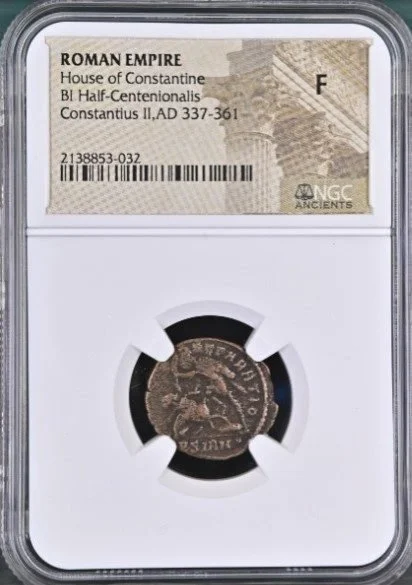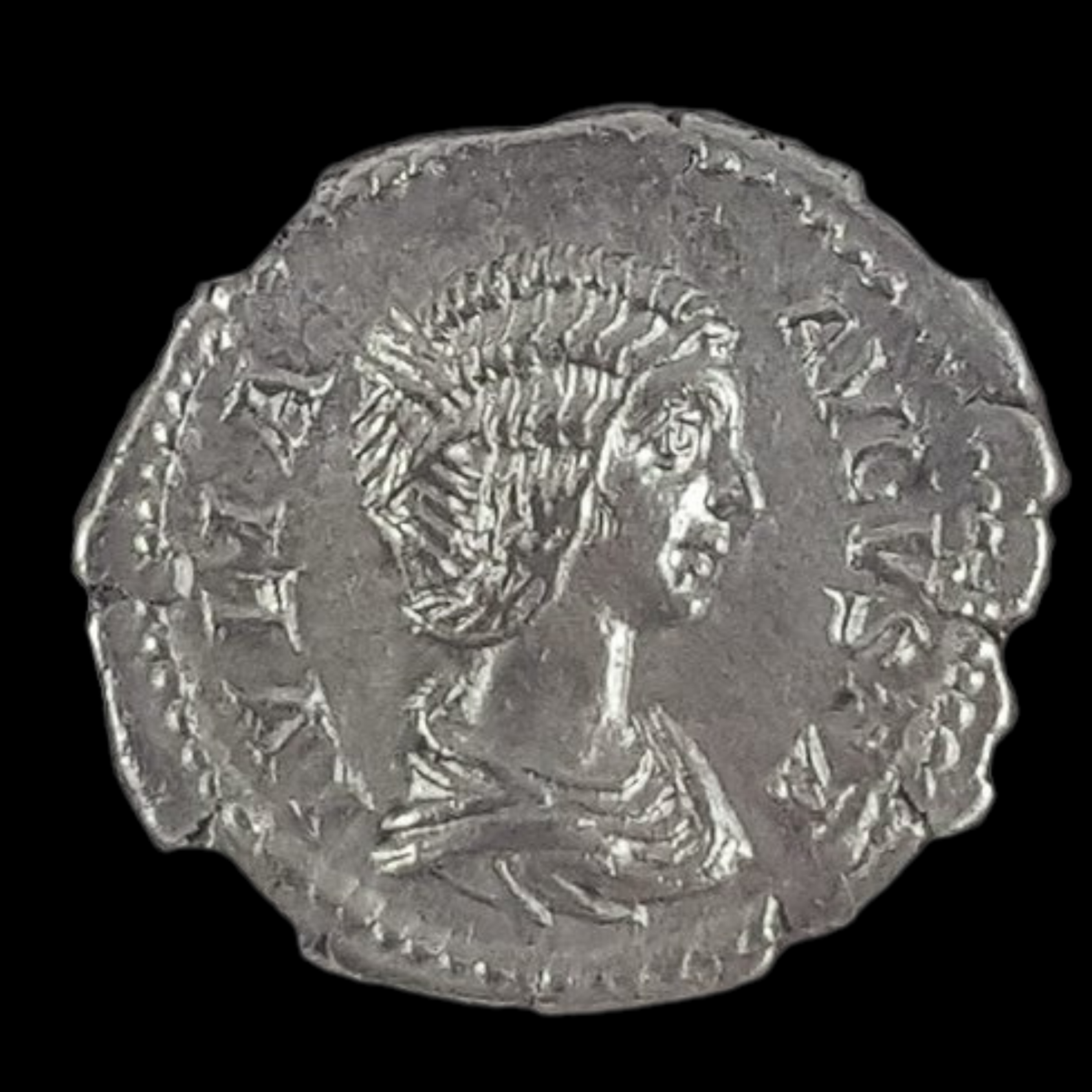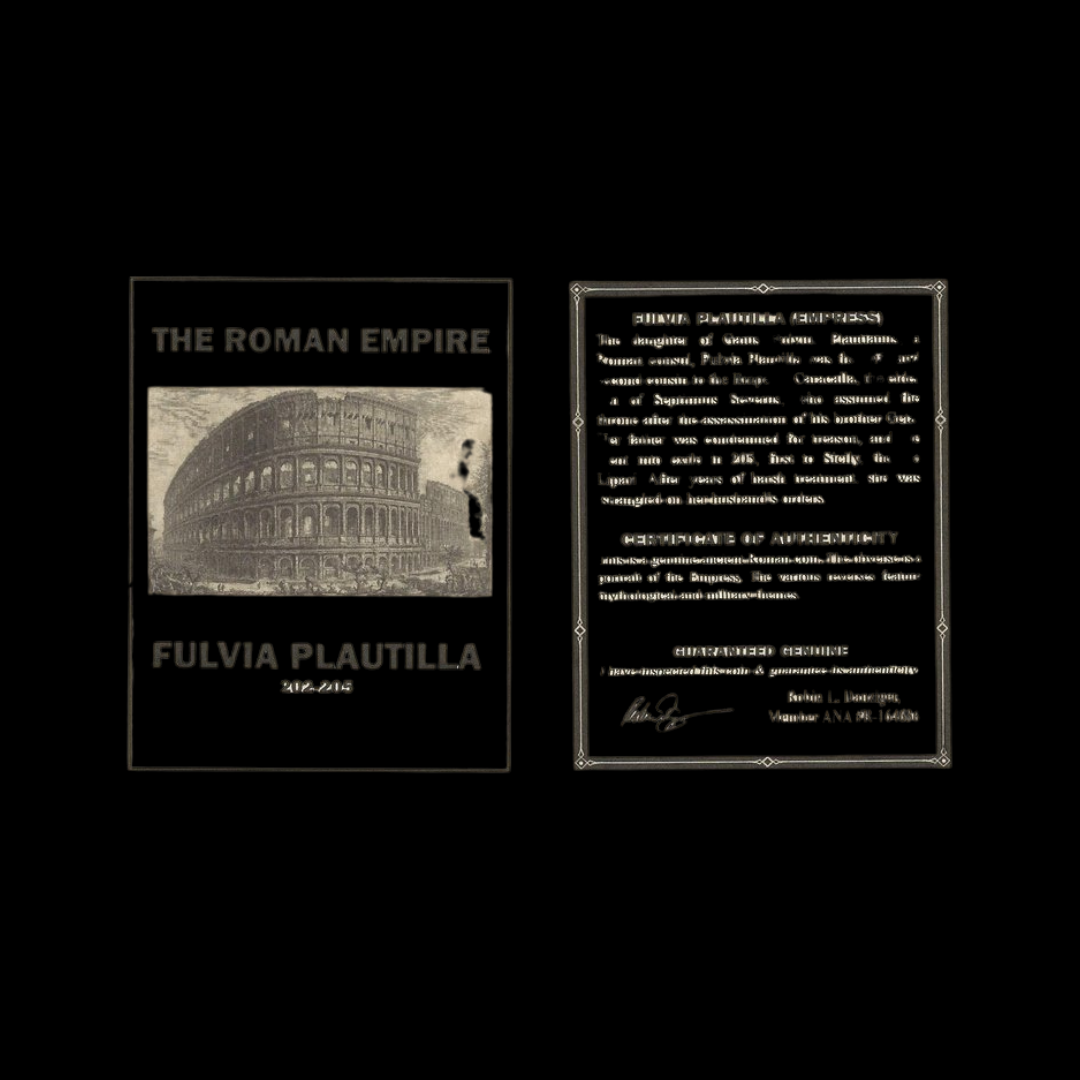 Image 1 of 4
Image 1 of 4

 Image 2 of 4
Image 2 of 4

 Image 3 of 4
Image 3 of 4

 Image 4 of 4
Image 4 of 4





Ancient Roman Bronze Coin of Emperor Constantius II — ‘Fallen Horseman’ Design Symbolizing Rome’s Victory Over Its Enemies, Struck Over 1,600 Years Ago and NGC Certified
The coins shown are representative examples of the grade and type, but not the actual specimens for sale. For details on NGC’s grading standards and definitions, please refer to our NGC Grading page.
This bronze coin featuring a distinctive "fallen horseman" design was issued during the reign of Emperor Constantius II, who ruled portions of the Roman Empire between 337 and 361 CE. The reverse imagery depicting a Roman soldier spearing a fallen barbarian cavalryman represents one of the most recognizable and popular military-themed designs in late Roman coinage.
Coin Description:
Front side: Portrait of Emperor Constantius II facing right, wearing a pearl diadem and imperial robes, with his name and titles in Latin around the edge.
Back side: Dynamic scene of a Roman soldier spearing a fallen barbarian horseman, with a design commonly referred to as the "fallen horseman" or "gladiator" type, though it actually depicts a battlefield scene rather than arena combat.
Technical Details:
Bronze alloy composition
Denomination: Likely an AE2 or AE3
Weight: Approximately 2-4 grams
Diameter: Approximately 18-22 mm
NGC Certified for authentication and preservation
Minted between approximately 348-361 CE
Condition as specified by NGC certification
Historical Significance: Despite its popular nickname as the "gladiator reverse," this coin design actually commemorates Roman military victories against barbarian cavalry forces, particularly the Sarmatians and other frontier tribes. Constantius II, son of Constantine the Great, was known for his campaigns along the empire's borders, particularly against Persian and Germanic threats. The fallen horseman imagery was powerful propaganda, emphasizing Roman military prowess during a period when mounted nomadic warriors increasingly threatened imperial frontiers. While gladiatorial combat was indeed an important aspect of Roman culture (lasting until its official abolition in 404 CE), this particular coin design celebrates battlefield victories rather than arena combat, demonstrating how imperial coinage effectively communicated military achievements to a population spread across a vast empire.
The coins shown are representative examples of the grade and type, but not the actual specimens for sale. For details on NGC’s grading standards and definitions, please refer to our NGC Grading page.
This bronze coin featuring a distinctive "fallen horseman" design was issued during the reign of Emperor Constantius II, who ruled portions of the Roman Empire between 337 and 361 CE. The reverse imagery depicting a Roman soldier spearing a fallen barbarian cavalryman represents one of the most recognizable and popular military-themed designs in late Roman coinage.
Coin Description:
Front side: Portrait of Emperor Constantius II facing right, wearing a pearl diadem and imperial robes, with his name and titles in Latin around the edge.
Back side: Dynamic scene of a Roman soldier spearing a fallen barbarian horseman, with a design commonly referred to as the "fallen horseman" or "gladiator" type, though it actually depicts a battlefield scene rather than arena combat.
Technical Details:
Bronze alloy composition
Denomination: Likely an AE2 or AE3
Weight: Approximately 2-4 grams
Diameter: Approximately 18-22 mm
NGC Certified for authentication and preservation
Minted between approximately 348-361 CE
Condition as specified by NGC certification
Historical Significance: Despite its popular nickname as the "gladiator reverse," this coin design actually commemorates Roman military victories against barbarian cavalry forces, particularly the Sarmatians and other frontier tribes. Constantius II, son of Constantine the Great, was known for his campaigns along the empire's borders, particularly against Persian and Germanic threats. The fallen horseman imagery was powerful propaganda, emphasizing Roman military prowess during a period when mounted nomadic warriors increasingly threatened imperial frontiers. While gladiatorial combat was indeed an important aspect of Roman culture (lasting until its official abolition in 404 CE), this particular coin design celebrates battlefield victories rather than arena combat, demonstrating how imperial coinage effectively communicated military achievements to a population spread across a vast empire.
































